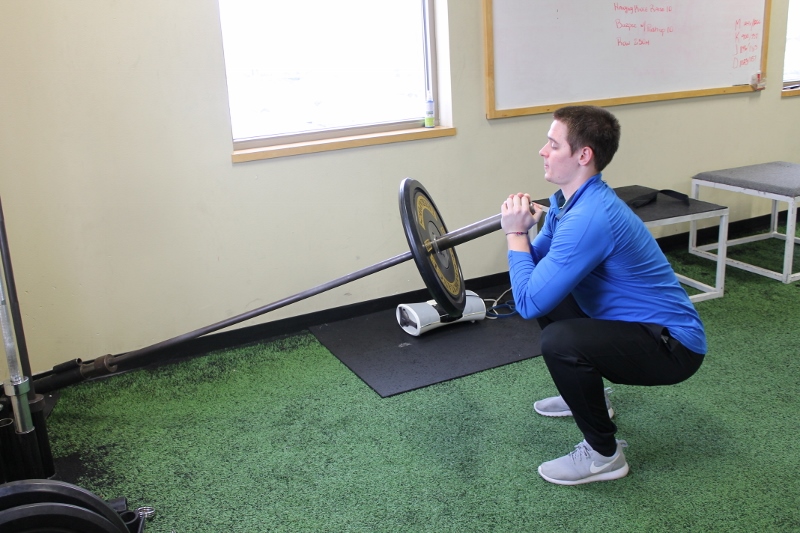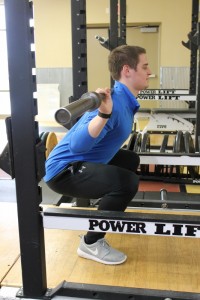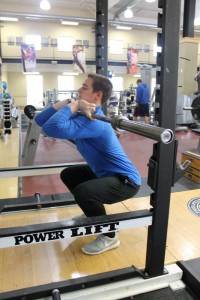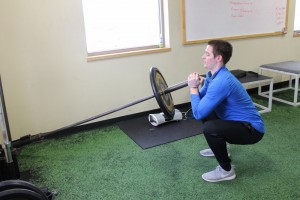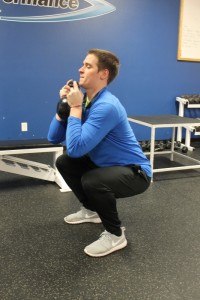The ability to squat is necessary in all facets of life. Whether we are talking about the 2-year-old child that amazes us with perfect technique picking up their toy, the 80-year-old that must be able to perform the sit to stand to stay active and independent, or the elite powerlifter that impresses us with their raw strength, this pattern may be the most important basic human movement we perform. Because of this importance loading the squat pattern in the gym has become a staple to improve lower body strength, size, and overall function.
Like any exercise in the gym if we repeat it enough under load our body will break down and get injured if the pattern is not efficient. The best programming in the world will not make a bit of difference if you do not first address the technical aspects of the squat that allow you to stay healthy. I am a big fan of Gray Cooks line of thinking on this subject. He states that you never want to add strength on top of dysfunction. In other words you do not want to add more weight to the bar or even perform the pattern in the first place if you do not have an efficient pattern. Two important factors to help minimize the injury risks associated with increasing the frequency, volume, or intensity of squatting are 1) to maximize your structural potential to perform the pattern efficiently, and 2) select the variation that fits your abilities and goals. Meeting these two requirements will go a long way in minimizing your risk of injury and allow you to make consistent gains over time.
Performing an efficient squat pattern is a challenge. You must have the necessary mobility in the ankles, hips, thoracic spine, and shoulders. On top of this you must possess the stability in the hips/core and upper back to hold a safe stable spine position while you produce force through your hips. I like to call these the prerequisites for the pattern. In school you were not allowed to take calculus until you became proficient at basic algebra, performing exercises in the gym should follow this same logic. Once these have been met then the correct instruction on foot position, hip/knee breaking strategy, squat variation, programming and individualized cueing can be addressed. Because of the many demands of this exercise I would recommend you have someone help you navigate these requirements and set you up for success.
The good news is why you are working on your specific mobility/stability deficits that limit some variations of the squat pattern there are other variations that allow you to get a similar training effect. Here is a list of some squat regressions/progressions and the inherent mobility requirements that the lift demands. If you are having some trouble or even discomfort when performing the more challenging squat patterns, regress to another variation as you address your deficits. The benefits of finding your best variation will allow you to stay healthy, groove a more efficient neuromuscular pattern, and get back to the higher level variations with a better chance of success.
Most challenging to least challenging in regards to mobility/stability:
Barbell back squat:
This is the typical pattern you think of when you hear squats. This has been the gold standard of lower body exercises but I would argue very few people can load this pattern safely and for a long period of time. Some of the experts in the field of strength and conditioning have gone away from performing this specific squat pattern with their athletes due to the inherent risk it places on the low back. If some of the best athletes in the world do not perform this pattern due to possible risks would it be unfair to say that the general public should be cautious of jumping into this exercise? A key component of exercise selection in the gym is risk vs. reward. This may be a lift that falls more on the risk side of the continuum for some people. If you are a powerlifter or someone who has efficient movement through this pattern the benefits are undeniable, but for the average gym goer there may be better options for you.
Barbell front squat:
Due to loading the weight in front this variation is inherently more knee dominant. It does require adequate ankle mobility to perform but the more upright torso angle makes it less prone to causing low back problems. While many people struggle with the hip mobility to perform back squats leading to hip impingement and lumbar flexion (butt winking), most people can keep a stable pelvis with this pattern due to less demand into end ranges of hip flexion. This variation is also more shoulder friendly because it does not force you into the “at risk” position of 90/90 at the shoulder. If you have a history of back problems or shoulder problems the front squat may be a better choice than the back squat. If you have knee pain or ankle mobility issues, then the front squat may not be the variation you choose.
Trap bar deadlift/Kettlebell deadlift:
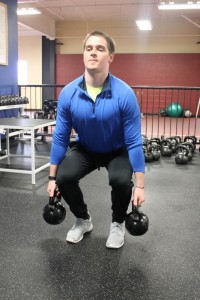 This pattern has very similar joint angles to the squat pattern. Having the weight at your sides and not in front as with the BB deadlift allows for a more upright torso angle and less shear stress on your low back.
This pattern has very similar joint angles to the squat pattern. Having the weight at your sides and not in front as with the BB deadlift allows for a more upright torso angle and less shear stress on your low back.
Landmine squat:
This is a great pattern that has many benefits. This squat variation forces a posterior weight shift and inherently teaches the proper squat pattern because of the forced bar path from the landmine. This exercise tends to be better for people with knee and/or low back issues. The bar path demands a hip dominant squat which takes stress off of the knees, while the anterior loaded position seems to allow less compression and anterior shear force on the low back. This exercise is unique in that it’s a great starting point to introduce the squat pattern but also allows for decent loading when you get more advanced. For the majority of average gym goers this would be my choice for learning the squat and getting strong at the pattern for a long time. As you become more proficient at this pattern progressing to the front or back squat may be appropriate, but I would recommend exhausting this pattern first.
Goblet squat:
This pattern has been the gold standard for teaching the squat for a while now thanks to legendary strength coach Dan John. The load placed in front of your body tends to clean up the pattern and allow most people to achieve full depth with a stable pelvis. The issue with this pattern is it becomes a challenge to load it effectively once you get stronger with the variation.
If you would like to have an assessment performed that looks at your ability to perform the squat and how to maximize the benefits of programming this pattern please schedule an appointment with me at Performance Therapies. I will go through a variety of assessments specifically focused on improving your squat, give you some correctional drills to clean up any mobility deficits you may have, and help you get efficient at the squat variation that best suits your function at this time.

